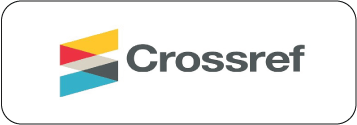E-Commerce Fraud Perceptions in Pakistan and Impacts of Risks and Preventive Measures
DOI:
https://doi.org/10.57053/itqan.v4i1.61Keywords:
E-commerce Fraud, Fraud PreventionAbstract
This study delves into the perceptions of e-commerce fraud in Pakistan by assessing the risks and preventive measures against such fraudulent activities. Employing a robust methodology that encompasses surveying a diverse group of stakeholders in the Pakistani e-commerce sector, this study scrutinizes their perspectives and experiences. The findings reveal a heightened concern regarding fraudulent practices, significantly challenging the industry's integrity and consumer trust. This concern is exacerbated by the rapid growth of e-commerce, making fraud prevention a critical issue. The study's statistical analysis sheds light on the prevalent types of fraud and their impact on consumers and businesses and evaluates the effectiveness of current prevention strategies. This conclusion draws attention to the need for more robust, multifaceted approaches to combat e-commerce fraud. Recommendations have been proposed to enhance fraud detection and prevention mechanisms. These include adopting advanced technological solutions, increasing consumer awareness, and implementing strict regulatory measures.
References
Al-Aali, E., & Alazali, R. M. (2022). Leadership Styles: The Case of Islamic Banks. In Religion and Its Impact on Organizational Behavior (pp. 203–222). IGI Global. https://doi.org/10.4018/978-1-7998-9319-6.ch009.
Aravik, H., Amri, H., & Febrianti, R. (2022). The Marketing Ethics of Islamic Banks: a Theoretical Study. ISLAMIC BANKING: Jurnal Pemikiran Dan Pengembangan Perbankan Syariah, 7(2), 263–282. https://doi.org/10.36908/isbank.v7i2.344.
Az-Zahroh, N. M., Safvitri, C., Surya Andhika Putra, & Anshori, M. I. (2023). Kajian Teori Kepemimpinan Situasional dan Kepuasan Kerja: Studi Literature Review. Jurnal Riset Dan Inovasi Manajemen, 1(3), 131–154. https://doi.org/10.59581/jrim-widyakarya.v1i3.784.
Batubara, S. S. (2020). Pengaruh Gaya Kepemimpinan terhadap Kinerja Karyawan pada Departemen Pengadaan PT INALUM (Persero). Liabilities (Jurnal Pendidikan Akuntansi), 3(1), 40–58. https://doi.org/10.30596/liabilities.v3i1.4581.
Budiaji, W. (2013). The Measurement Scale and The Number of Responses in Likert Scale. Jurnal Ilmu Pertanian Dan Perikanan Desember, 2(2), 125–131. http://umbidharma.org/jipp.
Burke, C. S., Sims, D. E., Lazzara, E. H., & Salas, E. (2007). Trust in leadership: A multi-level review and integration. Leadership Quarterly, 18(6), 606–632. https://doi.org/10.1016/j.leaqua.2007.09.006.
Chaniago, A. (2017). Pemimpin dan Kepemimpinan: Pendekatan Teori dan Studi Kasus. In Pemimpin Dan Kepemimpinan (Vol. 10, Issue 9). Lentera Ilmu Cendekia.
Damayanti, S., Ghalib, S., & Taharuddin. (2017). Pengaruh Budaya Organisasi, Kepuasan Kerja dan Komitmen Kerja terhadap Kinerja Karyawan pada Koperasi PRIMKOPPOL Polres Palangka Raya. Jurnal Bisnis Dan Pembangunan, 6(2), 112–128. https://ppjp.ulm.ac.id/journal/index.php/bisnispembangunan/article/view/4749.
Darmawan, S., & Roselini, B. T. (2022). Studi Gaya Kepemimpinan Situasional (Situational Leadership Model Hersey-Blanchard) pada Rumah Makan Padang Se-Kabupaten Sleman D.I.Y. Telaah Bisnis, 23(1), 50. https://doi.org/10.35917/tb.v23i1.248.
Dery Wijaya, Samsuri Samsuri, & Rachmat Gunawan. (2023). Pengaruh Gaya Kepemimpinan dan Budaya Organisasi terhadap Kinerja Karyawan. Lokawati : Jurnal Penelitian Manajemen Dan Inovasi Riset, 1(6), 123–130. https://doi.org/10.61132/lokawati.v1i6.342.
Dwianto, A. S., Darka, & Widayatmoko. (2023). The Role of Job Flexibility and Organizational Support in Employee Commitment: an Investigation with Job Satisfaction Intervention. Management Studies and Entrepreneurship Journal, 4(6), 10016–10023. https://doi.org/10.37385/msej.v4i6.3959
Edmondson, D. R. (2005). Likert scales: A history. Charm, 127–133. http://www.orion2020.org/archivo/investigacion/Likert_History.pdf.
Ghazzawi, K., Choughri, R., Shoughari, R. El, & Osta, B. El. (2017). Situational Leadership and Its Effectiveness in Rising Employee Productivity: A Study on North Lebanon Organization. Human Resource Management Research, 2017(3), 102–110. https://doi.org/10.5923/j.hrmr.20170703.02
Hair, J. F., Black, W. C., Babin, B. J., & Anderson, R. E. (2013). Multivariate data analysis: Pearson new international edition PDF eBook. Pearson Education.
Hair, J. F., Ringle, C. M., & Sarstedt, M. (2011). PLS-SEM: Indeed a silver bullet. Journal of Marketing Theory and Practice, 19(2), 139–152. https://doi.org/10.2753/MTP1069-6679190202.
Haji-Othman, Y., & Fisol, W. N. M. (2017). Islamic Religiosity, Attitude and Moral Obligation on Intention of Income Zakat Compliance: Evidence from Public Educators in Kedah. Journal of Academic Research in Business …, 7(2), 726–737. https://doi.org/10.6007/IJARBSS/v7-i2/2680.
Hassan, H., Asad, S., & Hoshino, Y. (2016). Determinants of Leadership Style in Big Five Personality Dimensions. Universal Journal of Management, 4(4), 161–179. https://doi.org/10.13189/ujm.2016.040402
Iqbal, S, A., & N, H. (2015). Arabian Journal of Business and. Arabian Journal of Business and Management Review, 5(5), 1–6. https://doi.org/10.4172/2223-5833.1000146.
Joshi, A., Kale, S., Chandel, S., & Pal, D. (2015). Likert Scale: Explored and Explained. British Journal of Applied Science & Technology, 7(4), 396–403. https://doi.org/10.9734/bjast/2015/14975.
Khairunnisa, F., Oktaviani, S., Oktaviani, S., & Fadhilah, Z. N. (2021). Kebijakan Ekonomi Pada Masa Kegemilangan Islam Umar Bin Abdul Aziz. Journal of Islamic Management Applied, 1(1), 1–7. https://journal.uir.ac.id/index.php/jima/article/view/8415.
Koopmans, L., Bernaards, C. M., Hildebrandt, V. H., de Vet, H. C. W., & van der Beek, A. J. (2014). Measuring individual work performance: Identifying and selecting indicators. Work, 48(2), 229–238. https://doi.org/10.3233/WOR-131659.
Krejcie, & Morgan. (1970). Determining sample size for research activities: The case of organizational research. Business Review, 2(1), 20–34. https://doi.org/10.1177/001316447003000308.
Lent, R. W., & Brown, S. D. (2006). Integrating person and situation perspectives on work satisfaction: A social-cognitive view. Journal of Vocational Behavior, 69(2), 236–247.
Memon, K. R. (2014). Effects of Leadership Styles on Employee Performance: Integrating the Mediating Role of Culture, Gender and Moderating Role of Communication. International Journal of Management Sciences and Business Research, 3(7), 63–80.
Mohammed, I. S., Maina, A. I., Muhammad, A., & Wilson, U. (2024). An Asessesment of Unfluence Style on Productivity od Construction Workers within Metropolis. (JBER); Journal of Biodiversity and Environmental Research, 2003, 73–94.
Muktamar, A., Safitri, T., Nirwana, I., & Nurdin, N. (2024). Proses Pengambilan Keputusan dalam Manajemen. Journal of International Multidisciplinary Research, 2(3), 17–32. https://doi.org/10.62504/t4z8gx04.
Downloads
Published
How to Cite
Issue
Section
License
Copyright (c) 2024 Kristine Joy Simpao, Faraz Ahmad

This work is licensed under a Creative Commons Attribution-NonCommercial-NoDerivatives 4.0 International License.
The author of this article grants ITQAN: Journal of Islamic Economics, Management, and Finance the right to publish this work that is licensed under a Creative Commons Attribution License, which allows others to share the work with an acknowledgement of the work's authorship and initial publication in this journal.







